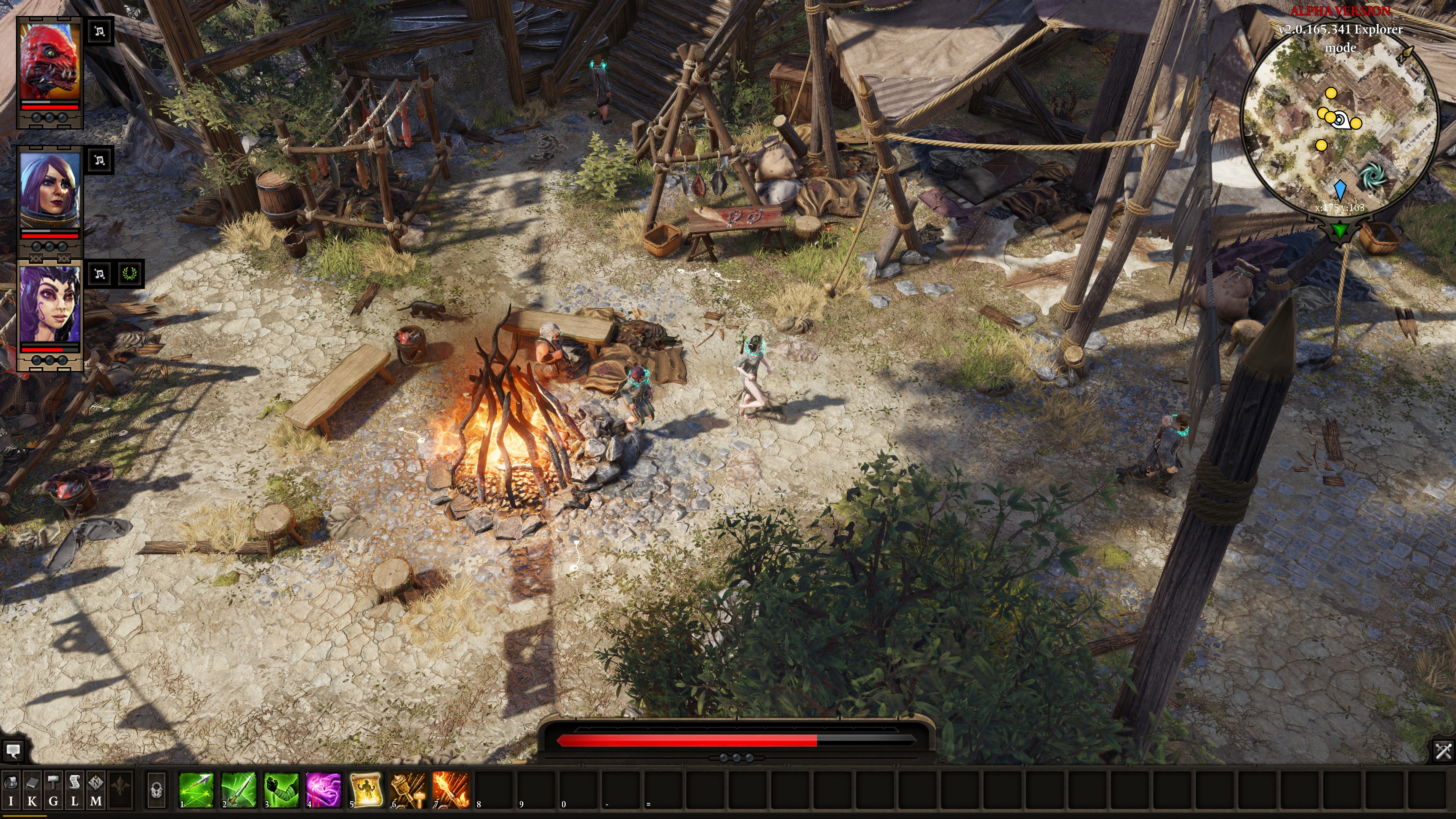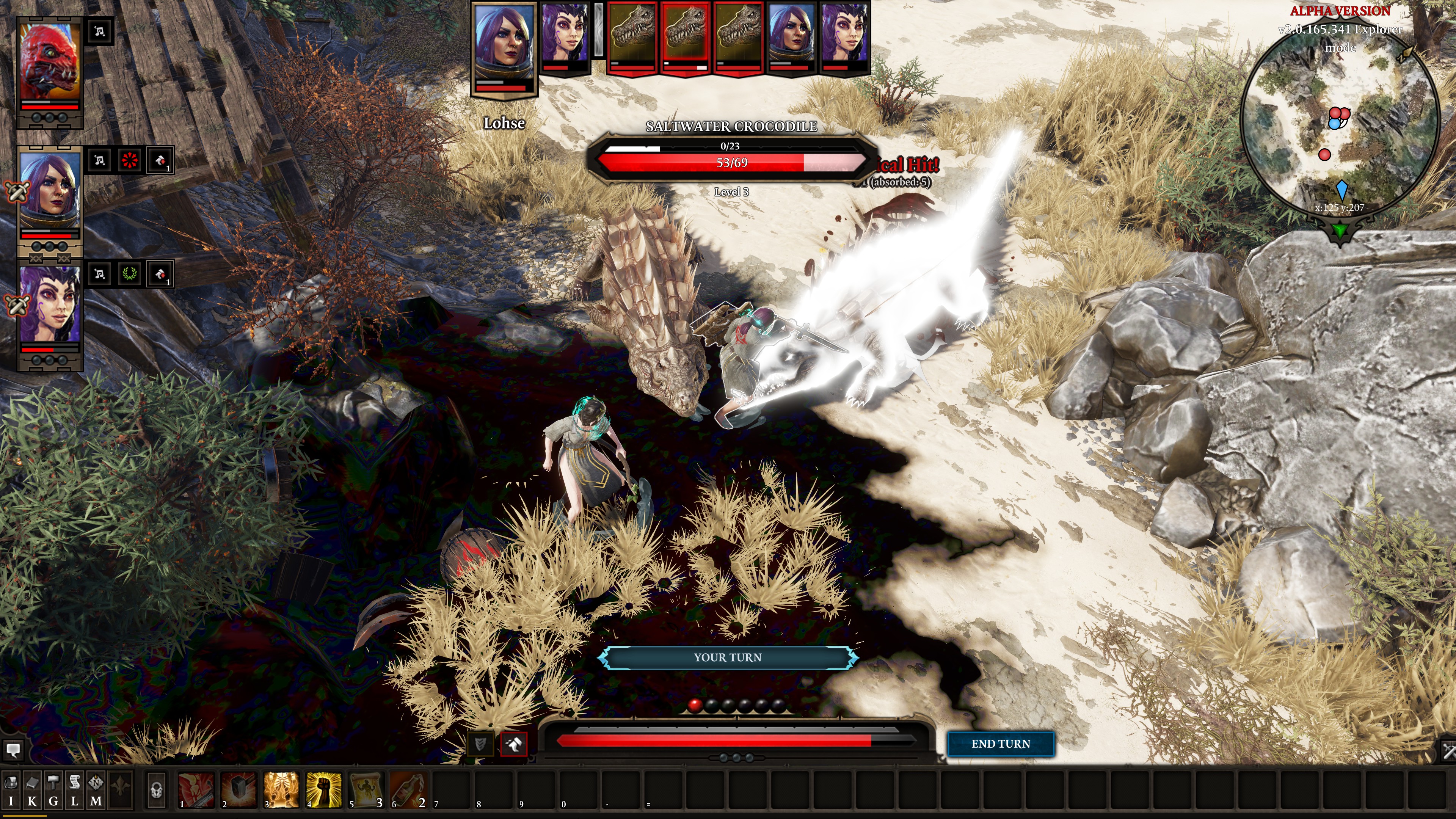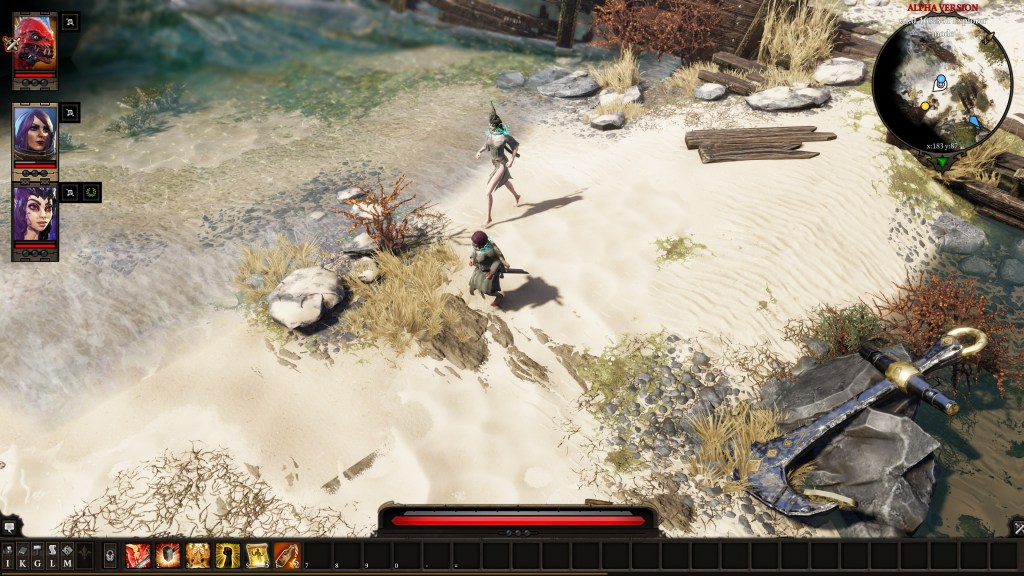I was feeling on top of the world. Having shipwrecked on a prison island a few hours back, I’d managed to find a colony of other prisoners and jailers. I’d talked a lizard prince out of killing himself, and later befriended a somewhat racist elf woman, leading to both of them being my new travel companions. All the while, I’d freed an elf from unfair captivity, killed street thugs terrorizing a poor woman, and started figuring out how to console a grieving mother who’d lost her kid. All was well, I was getting the lay of the land and I was ready to keep adventuring.
That was before I wandered into a croc-infested bog and died almost instantly.
Welcome to Divinity: Original Sin II, an immersive and punishing cRPG currently in Early Access on Steam. I didn’t know quite what to expect when I hopped in this game, as my experience with its particular brand of role-playing is limited. But when the game basically just threw me into its world, directionless, and let me do whatever, I felt like the developers and I were on the same wavelength.
Players can choose from either one of four preset characters or one molded through the creation system using a very robust set of tools. For my playthrough, I went with Lohse, her “mind a playground for demons” and her “body prone to violent episodes.” Sounded right up my alley. Almost immediately, Lohse was thrown onto a beach, after her ship crashed and killed practically everyone on board. That meant that her captors were killed. Yes, Lohse is, in fact, a captive for reasons that aren’t entirely explained, but it probably has to do with her history of violence and possibility of demonic possession.

After that initial wreck, I was set free on the world. As in, I was given literally no direction and immediately able to explore my new home to my heart’s content. At first, I decided to test the parameters of the game. So I straight-up killed the aforementioned lizard, the Red Prince, which the game let me get away with. I started fights in the hub town with anyone and everyone. I chose the rudest dialogue choices available to me. Much to my surprise and delight, Original Sin II didn’t really seem to care. While I eventually started over and reined in my baser impulses, I appreciate the authenticity of the role-playing here. As in, you pick a role and how said role develops is entirely in your hands.
That can be a bit of a double-edged sword, though. It’s very easy to get yourself lost and side-tracked in this game due to its open-ended nature. Another contributing factor, though, is the overall lack of direction. The quest system is a bit confusing, as it’s unclear how exactly quests are tracked, when quests are completed, and what you’re even supposed to be doing if you choose to follow a plot thread. It also doesn’t help that quests don’t have waypoints on the map.
This can be frustrating if you’re supposed to follow a character, only for them to run off to some unknown destination. Good luck finding them again. While I ultimately appreciate the open, ambling nature of Original Sin II, more cohesive directions would help make it a bit more accessible. It can be a little irritating to try and figure out where you’re supposed to be going, only to wander into an ambush and get murdered.
More accessibility in that area would round out the package too, as this is one of the more accessible cRPGs I’ve run into. Combat is a turn-based affair, giving players a certain amount of AP to spend per turn. Anyone who’s picked up something in the vein of Valkyria Chronicles will feel instant kinship with this system. It’s basically point, click, rinse, repeat, and the ease of access makes it simpler to dig into deeper mechanics, like buffs, status ailments, etc. Control is also relatively simple outside of combat, letting you click certain points or hold the mouse in any direction to roam about. Menus are easy to navigate, bartering is a cinch for anyone familiar with a Bethesda game, dialogue choices are pretty straightforward—everything about Original Sin II feels easy enough to grasp, without giving up the genre’s signature depth.

Rounding out the package are a stellar set of visuals, with fairly detailed textures and a pretty slick set of lighting and bloom effects. Even in alpha, Original Sin II on its highest settings is a very pretty game, aided by a unique art direction and use of a varied color palette. It’s easy to lose time even in the early parts of the game, just trying to see everything available at this point and soak it in.
It’s clear that Divinity: Original Sin II is far from finished. The narrative isn’t complete. Whole features (party dialogs, for example,) aren’t yet implemented. There’s some residual control and collision detection jank. And yet, it already feels like a compelling, cohesive experience that’s well worth the price of admission. You have a nice handful of hours available to you and a lot of different choices you can make in a given playthrough. It’s also becoming a rarity for role-playing titles to let you do whatever you want, with even the latest Fallout locking you into certain choices and preventing you from shaking up the game too much. For a game in alpha to give me more freedom and autonomy than most finished, triple-A products is no small feat.
Divinity: Original Sin II is a game I’ll be following closely on the road to its release. If the final product is a more polished version of what’s already here, then I have no doubt it will be one of the best RPGs in years.







